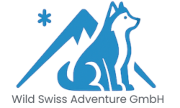🐾 Team building with huskies - what the business world can learn from the pack

Anja Nehrenheim
🐾 Team building with huskies - what the business world can learn from the pack
From catering to teamwork: a comparison of management, motivation and structure
What companies can learn from a husky pack
Team building, leadership, motivation and trust - explained in a practical way with animal experience and a dash of humour.
- Leadership competence
- Team leadership
- Huskies and leadership
- Non-verbal communication in the team
- Recognising team roles
From Lindau to Valais with a pack in your heart
My professional journey began in the classic way - with a hotel management apprenticeship in Lindau. My path then took me to Dublin, and later to Switzerland: from a restaurant on Lake Zurich to a bar in Zurich's nightlife scene to system catering as a manager. One thing was always constant: team building, leadership and the desire to bring people together.
One particularly formative example was the opening of a new store, where I had to build a functioning team in a very short space of time. Just like in a husky team, it was important to recognise the strengths of the individual team members, avoid tensions and rivalries within the team and find a common rhythm in order to meet the requirements of the shop and the team.
At the same time, my pack grew at home. And at some point I realised that a functioning team in the business world is more like a pack of huskies than you might think.
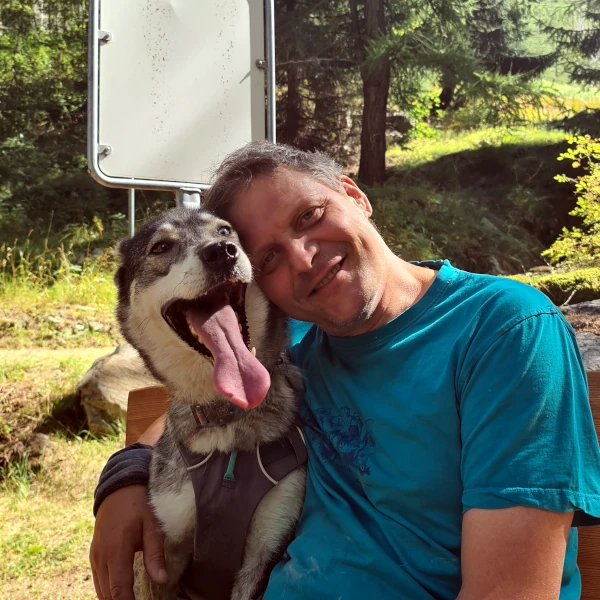
Phil on a trip with Storm
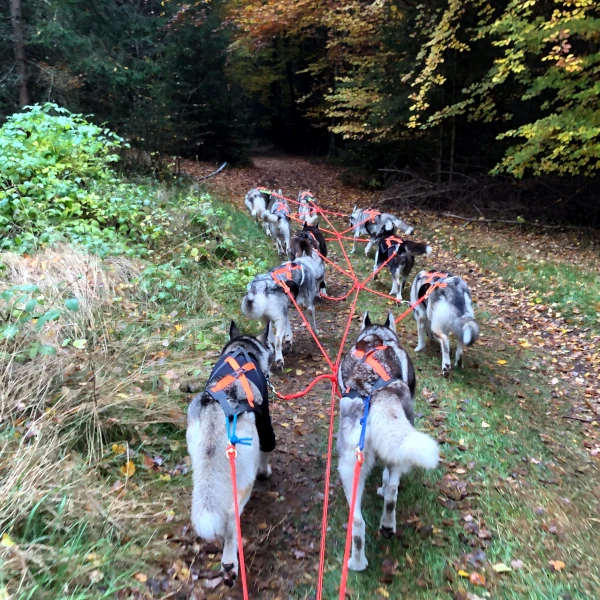
Together on the trail
Huskies & team structure - clear roles, clear direction
In a dog sled team:
- Leader dogs - smart, decisive, set the pace
- Swing dogs - flexible, coordinate the curves
- Team Dogs - strong, consistent, carry the main load
- Wheel Dogs - strong and stable, directly on the sled
In everyday business life:
- Leaders, supporters, strategists & doers
- Not everyone has to lead - but every role is essential
- Good team building recognises talent and makes targeted use of it
A harmonious team - whether on runners or in the office - needs structure, trust and a common goal.
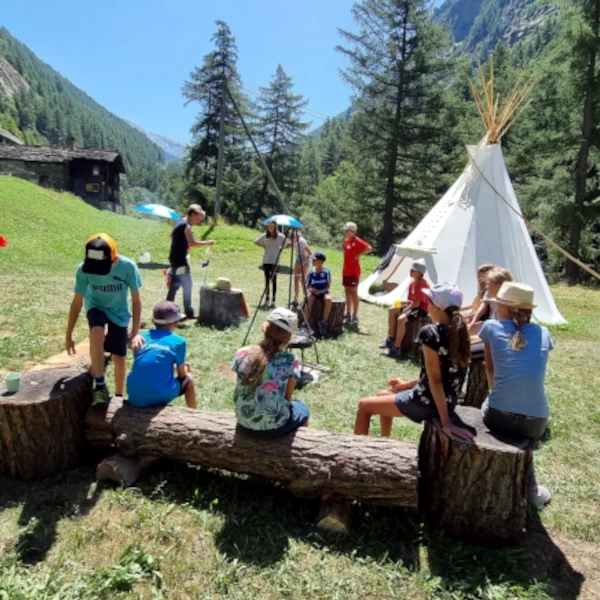
As a team, distribute tasks at the Husky Event
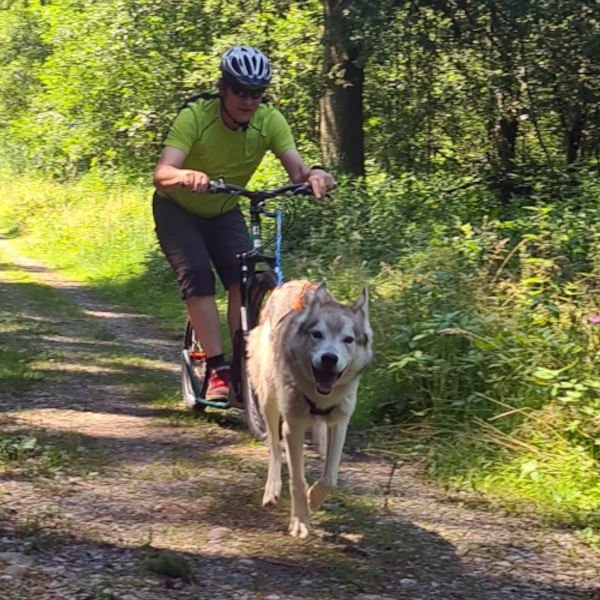
Scooter training for leaders
Communication - more than words
Huskies:
- Communicating non-verbally - body language, energy, behaviour
- Tensions are immediately visible, harmony tangible
People in a team:
- Body language, tone of voice and facial expressions influence the atmosphere
- Good observers can recognise and resolve tensions early on
Good leadership means listening, observing and understanding. Non-verbal communication is also the key to successful teamwork in business.
Trust - the invisible tether in the team
In a pack:
- A husky that loses confidence in the musher - for example due to too much pressure or carelessness when driving - will hesitate when walking and become insecure.
In the team:
- I remember a new team member who couldn't handle the communication and time pressure of customers at the checkout. He became nervous and made mistakes. Through an open dialogue and a move to production, he was able to develop his potential - and became an indispensable part of the team.
- Trust is created through reliability, transparency and clear communication
- Lack of trust inhibits productivity and innovation
Trust is non-negotiable - it is the basis for motivation and leadership competence.

Sunset over the Valais Alps
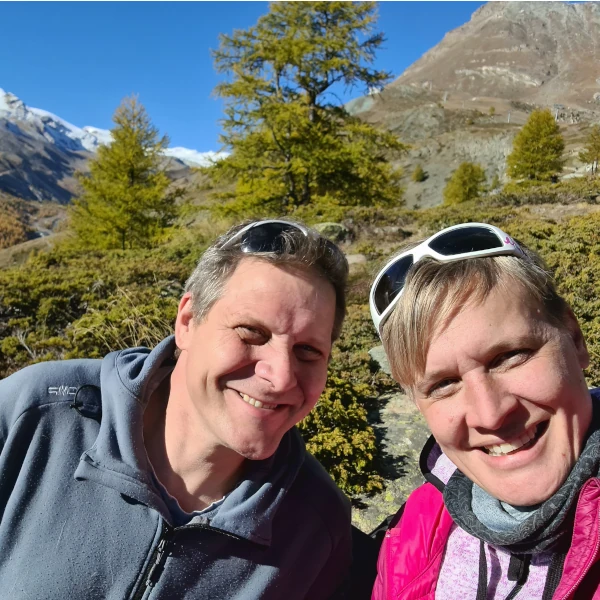
Me and Phil as the Wild Swiss Adventure team
Motivation & purpose - why we move at all
Huskies:
- Pull, if they know what for
- Overload, underload or insecurity? → Blockade
Employees:
- Everyone has their own drive: some need clear goals and daily targets, while others function better when they recognise a vision and can contribute to the big picture. Both are right - as long as they are recognised and encouraged accordingly.
- Meaningful tasks & visible goals promote motivation in the team
A team that knows the "why" surpasses itself. This is just as true for agile teams as it is for husky teams.
Respect & conflict - not afraid of friction
Huskies:
- Resolve conflicts directly, but socially - without escalation
Teams:
- Conflicts are part of it - the decisive factor is how they are handled
- Respect is the basis for team leadership and sustainable team development
Conflicts are opportunities - if they are resolved fairly and respectfully.
Husky stories
Existing contributions

Anja Nehrenehim
Anja is the founder of Wild Swiss Adventure and lives with 16 huskies in Eisten in Valais.

